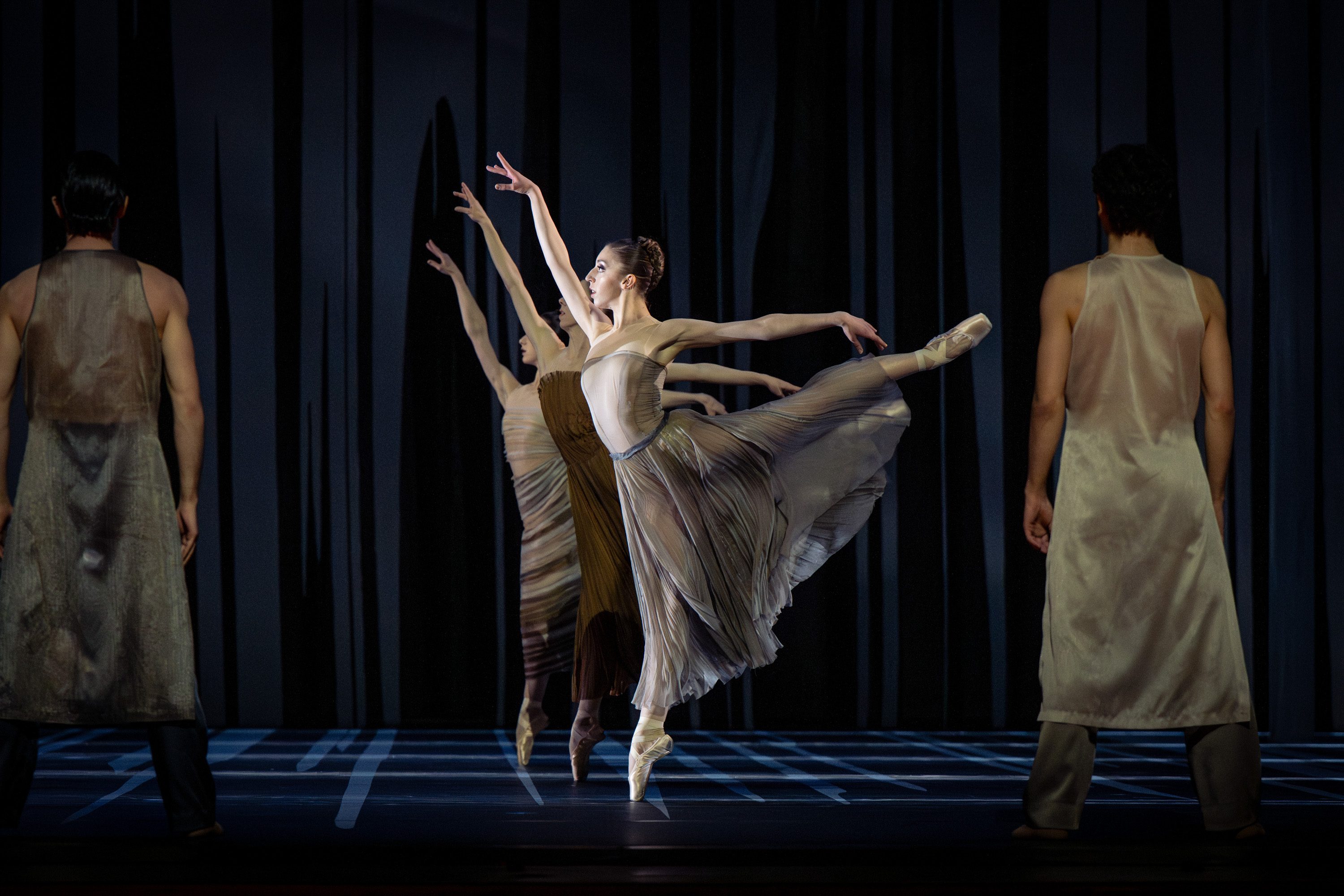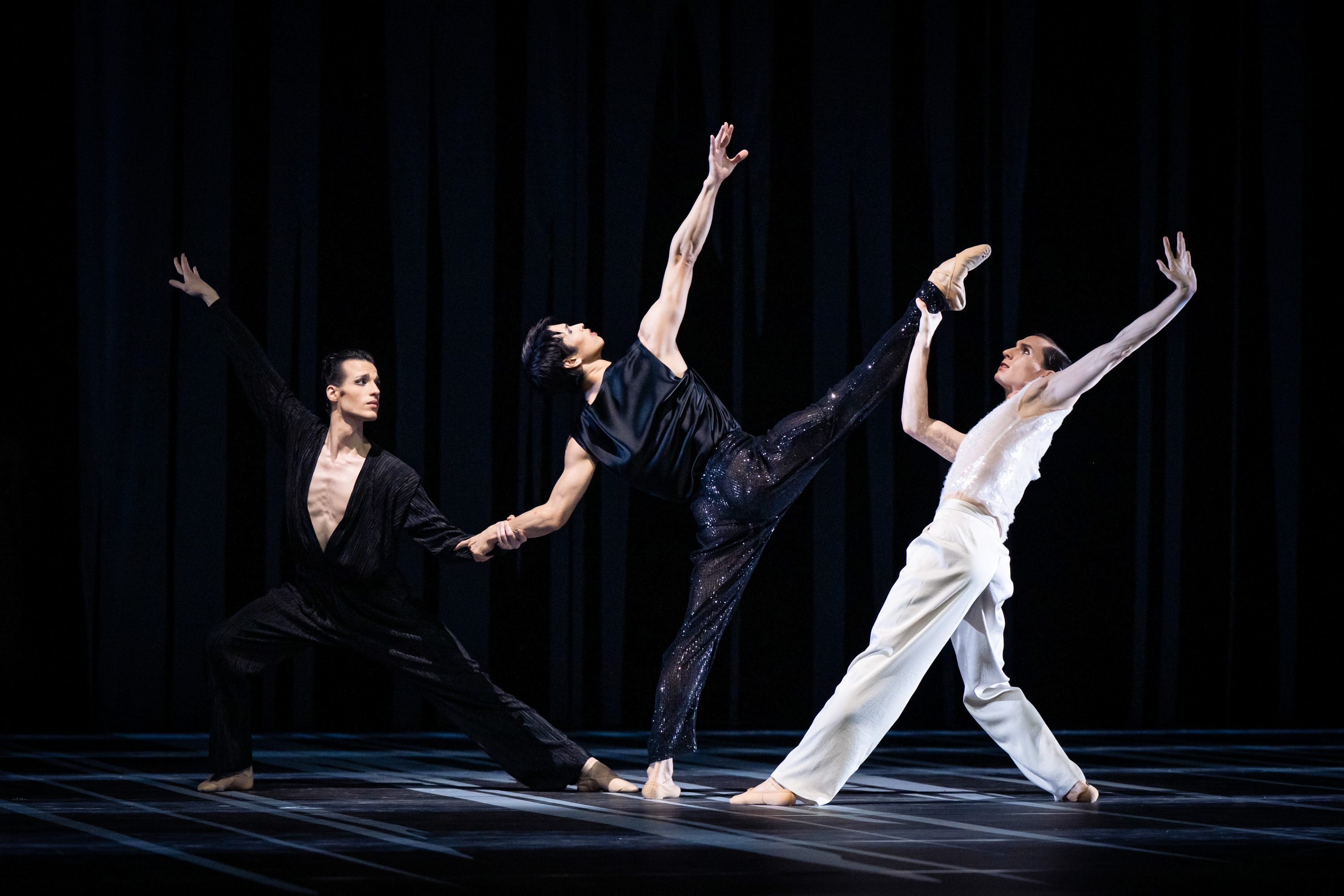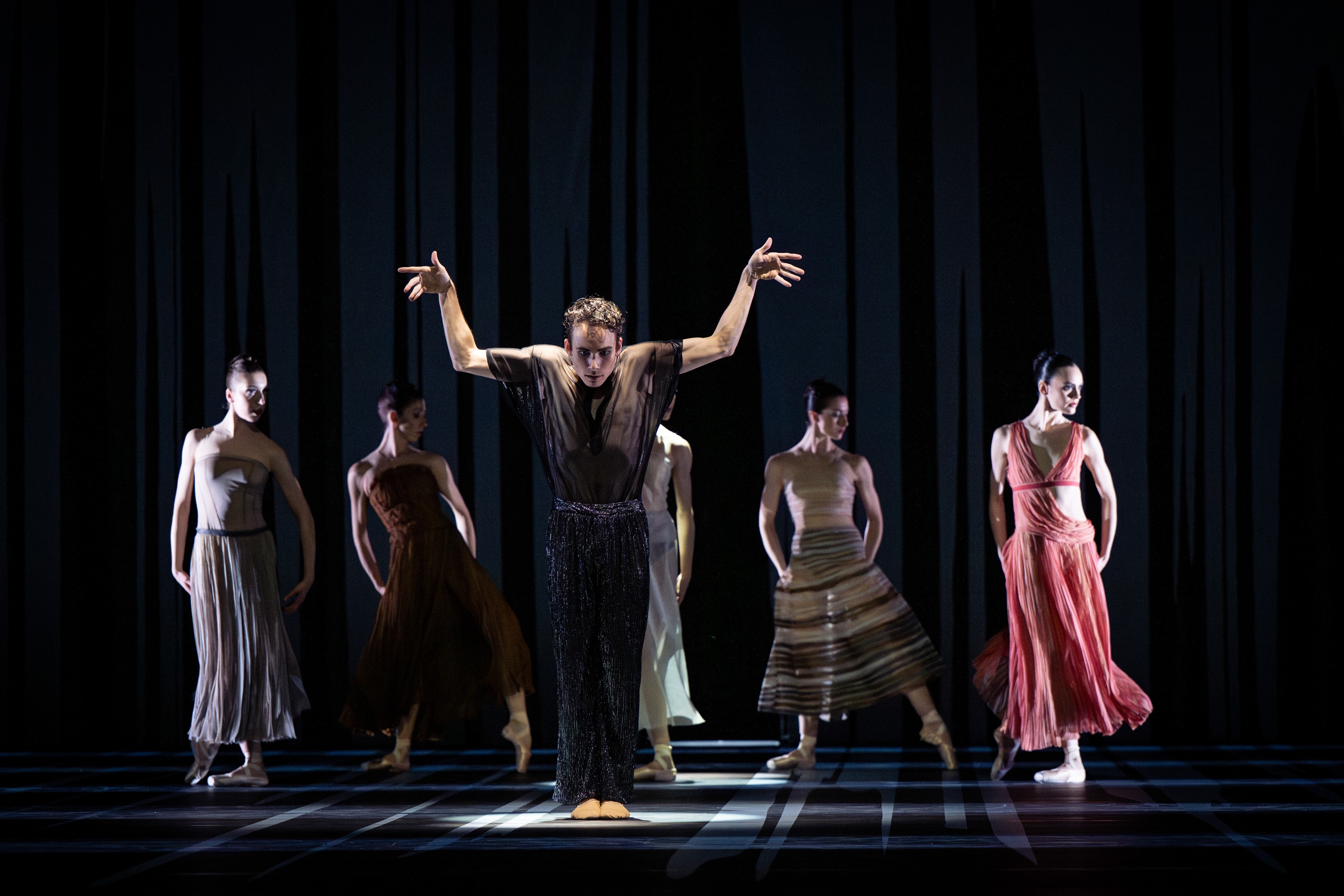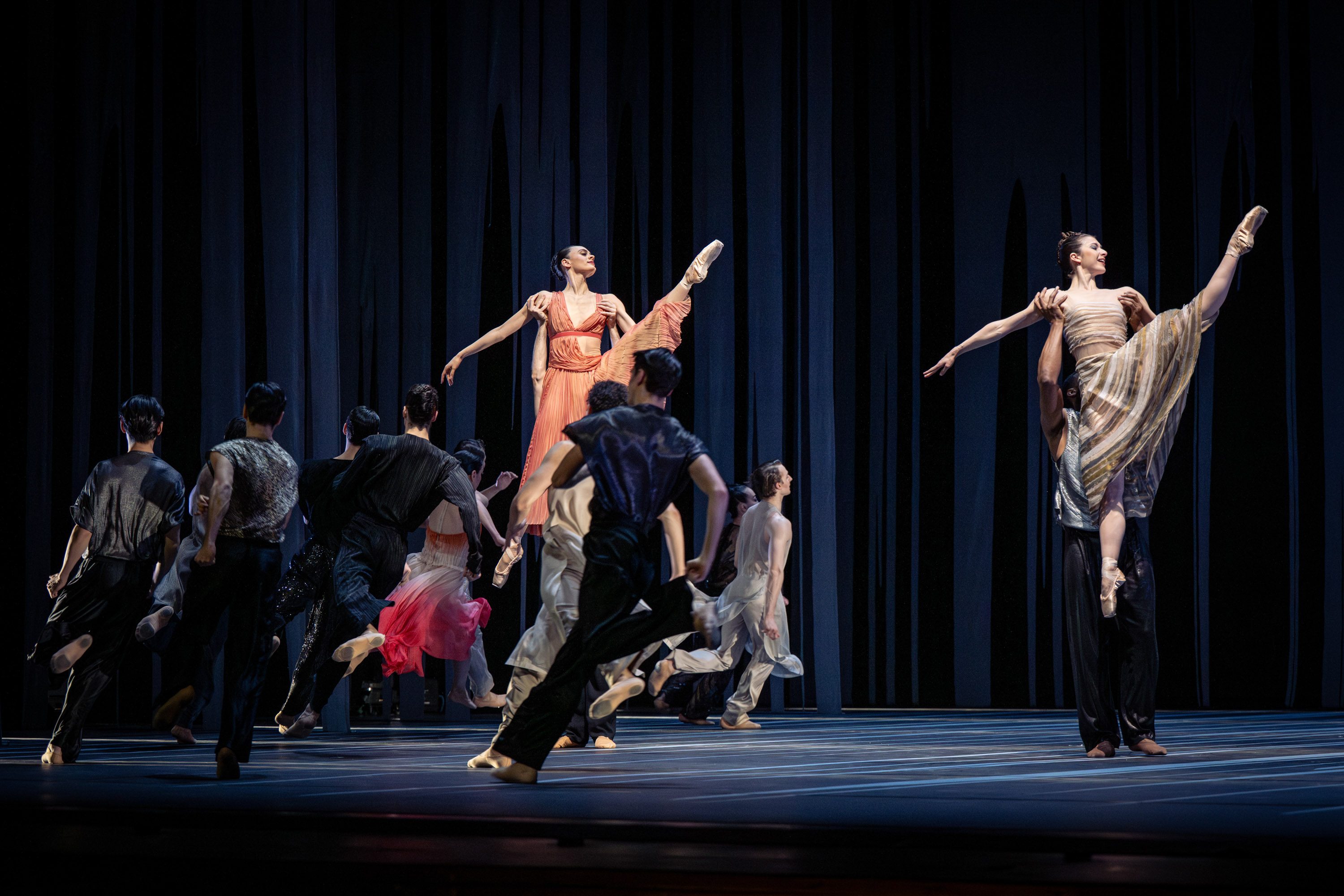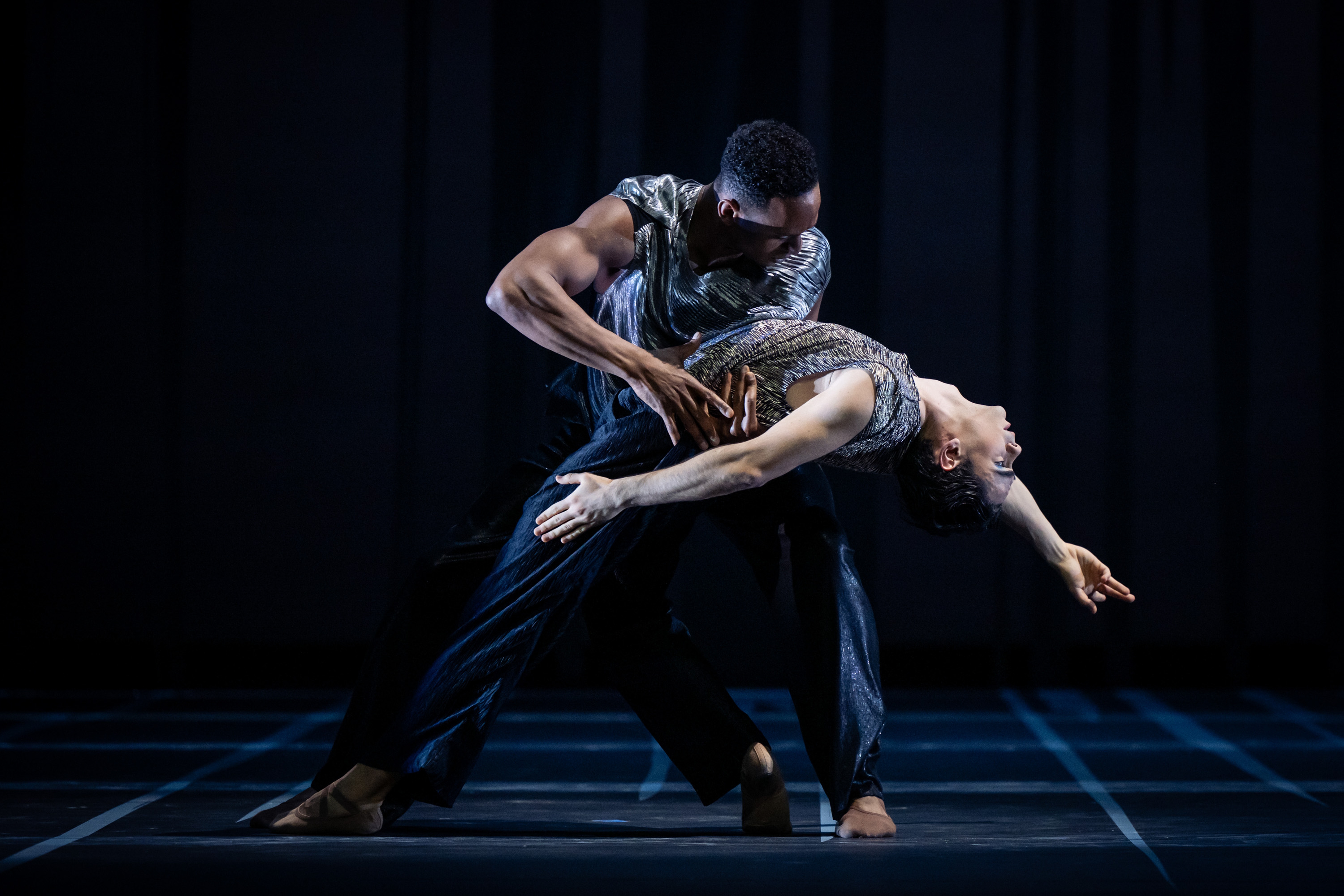Ballet premiere of »Pathétique«
Feature |
To mark the occasion, the ballet director and chief choreographer of the Vienna State Ballet has once again embarked on a creative process with the dancers in his ensemble and created a large-scale ballet to Piotr I. Tchaikovsky's 6th Symphony, which he brings together two icons of New York dance modernism: George Balanchine's fragrant Mozart ballet Divertimento No. 15 from 1956 and Merce Cunningham's leaping and spinning dance piece Summerspace from 1958, which also seeks contact with the air.
A special highlight opens the premiere for art lovers: the stage and costume design for Summerspace was created by Robert Rauschenberg, who would have celebrated his 100th birthday in 2025. Known above all for his objects known as Combines, the pioneer of American Pop Art was also a close partner of the American choreographer in over 20 joint projects.

"I try to find interesting proportions of movement in time and space, because music is time. It's not the melody that counts, but the time it gives you," George Balanchine once said about his choreographic work. Divertimento No. 15 is one of the few ballets Balanchine created based on a work by Wolfgang Amadeus Mozart. Born entirely from the music - Mozart's Divertimento in B flat major K. 287 - it beautifully evokes the spirit of the divertissement, originally created to entertain.
The chamber music score corresponds to a selected ensemble cast of five female soloists, three male soloists and a corps de ballet of eight female dancers for a choreography in which Balanchine writes diverse geometric patterns into the space with refined delicacy, while at the same time unfolding his dances with great power, virtuoso verve and individual character in the individual variations.

Following the premiere of his Duets 2022 at the Volksoper Vienna, Summerspace is the first work by Merce Cunningham to be performed with the Vienna State Ballet at the Vienna State Opera. No other choreographer has questioned the self-evident nature of dance art as radically as Cunningham with his suspension of the relationships between movement, music and stage and costume design, the development of a dance technique that creates new connections between the parts of the body, or the liberation from traditional notions of theatrical space.
In Summerspace , six dancers seem to fly across the stage like birds above an imaginary coordinate system in the relaxed atmosphere of a balmy summer's day. "It's about space, as the title suggests," explained Cunningham. "I numbered the entrances to the stage (...) and mapped out all the possible routes between them." This resulted in 21 possibilities, for which he defined different forms of movement and determined their sequence and tempo according to the random principle of aleatorics. In addition to Robert Rauschenberg, who created a pointillist flower landscape with his stage and costume design, he was also able to recruit an outstanding contemporary artist for the musical score: Morton Feldman composed atmospheric music for two pianos.
With his world premiere of Pathétique , Martin Schläpfer concludes a series of ten works, some of them full-length, that he has created for the dancers of the Vienna State Ballet and the Youth Company as chief choreographer since 2020, giving the ensemble a distinctive artistic profile. With Piotr I. Tchaikovsky's Symphony No. 6 in B minor op. 74, Martin Schläpfer has chosen a composition as his musical basis that is characterized by emotional flights of fancy as well as stark crashes and deep melancholy. It is a sonorous landscape of the soul and yet a composition that goes far beyond purely autobiographical traits, into whose maelstrom Martin Schläpfer enters with dance images full of drama and power, but also a fragility and beauty that gets under the skin.
Reminiscences of Tchaikovsky's biography, echoes from his great ballets, images from the history of Russia and reflections on our time are charged by the choreographer as if in a pressure chamber and catalyzed by his movement language into a dance world panorama. "Tchaikovsky's Pathétique is a composition like a novel and, despite everything that has been read into it, a mystery," says Martin Schläpfer. "Music that washes over us like water, in which we sink, and then, full of virtuosity, brilliant tempi, a wide range of dynamics and a fascinating wealth of melodies, carries us up again," says Martin Schläpfer, who concludes the work with a pacification - an unusual epilogue carried by George Frideric Handel's aria Sweet Silence HWV 205: Imagination of a, according to the aria text, "rest ... that is eternally ready for us".

